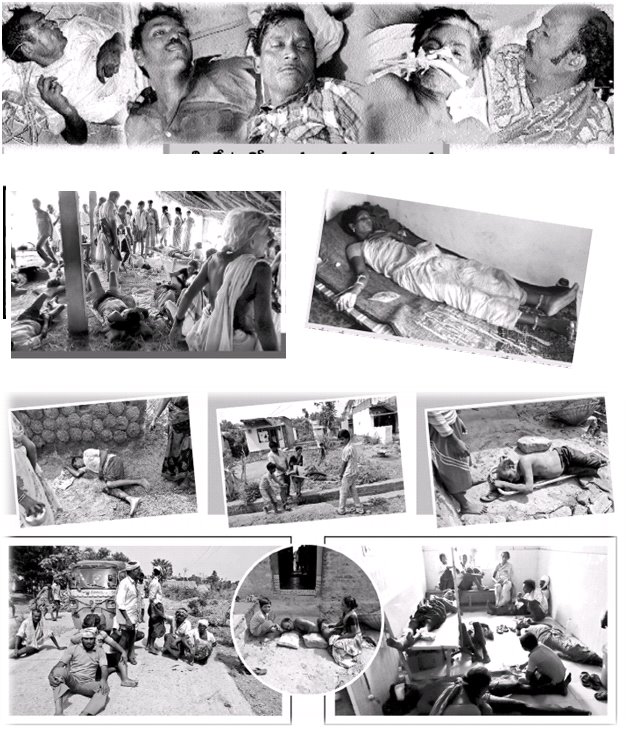Naveed Ahmad Lone
Introduction
Some are born great; some have greatness thrust upon them, and some achieve greatness. Dr Ambedkar best fits in the third category. Dr Baba Saheb Bhimrao Ambedkar is among the most outstanding intellectuals of India in the twentieth century. The work in economics by his good self is noteworthy. Dr Ambedkar has often been portrayed as a leader of the ‘Dalit’ community and nothing else. An obscure reference is made to him in school textbooks as the architect of the Indian constitution. Very few would know that Ambedkar was among the first set of Indians who were trained in Economics and practised it professionally.
This was further proved by a recently conducted survey by ‘History TV 18 and CNN-IBN’ in June 2012. ‘Who is the greatest Indian after Gandhiji?” was the question asked from the people of India. The contestants included the First Prime Minister Jawahar Lal Nehru, Singer Lata Mangeshkar, Industrialist J.R.D. Tata, A.P.J.Abul Kalam Azad, Indira Gandhi and Vallabhai Patel. The final cumulative ranking was conducted following the three ways poll; ranking by jury (online and on the ground), ranking by popular votes and ranking by market research. Finally, Dr. B.R. Ambedkar was declared as the winner. Historian Ramachandra Guha stated on the declaration of results: “Dr Ambedkar’s legacy has been distorted to suit particular interests. He was a great scholar, institution builder, and economic theorist”. Professor A.K. Sen also said,”Ambedkar is my father in Economics. He is a truly celebrated champion of the underprivileged. He deserves more than what he has achieved today. His contribution in the field of economics is marvellous and will be remembered forever.” (Ambirajan, 1999)
No doubt India’s GDP is growing high day by day; no doubt India is a three trillion dollar nation today. However, the common man in India is frustrated and disappointed due to many social and economic problems. Due to financial scarcity and loan burdens, continuous exploitations at the hands of landlords and banks, the farmers are committing suicide every day. Poor are becoming poorer and rich richer. The people who are gripped with the mindset of social inequality and religious fundamentalists never felt the importance of nation building. This is a serious disease this country is infected with. After independence, India got a cover up in the figure of nationalism and patriotism, but the innocent people of India have never understood the hidden agenda of the so-called rulers who always boycotted the rights of larger sections of this country. And therefore, it is high time to study, understand and implement Dr Ambedkar’s social, economic and humanitarian thoughts.
Dr Ambedkar is fondly called ‘Babasaheb.’ Babasaheb is the name to be reckoned with as an epitome of Cultural Revolution in social, political, religious horizon of pre and post independence India, especially for a significant group of people languishing under inhuman and oppressive Indian society (Pal, 2012). In this millennium, we should take the initiative for awakening the society’s upcoming generation to imbibe the thought put forth by Dr Ambedkar, which is essential for nurturing humanity needed for the very survival of mankind. In this context, this paper makes an attempt to present the brief overview of Ambedkar’s economic development model. The paper also tries to argue the relevance of the model in the present context.
Ambedkar’s Vision of Economic Development
Ambedkar believed that the thrust of strategy for India’s economic development should be on eradication of poverty, elimination of inequalities and on ending the exploitation of the masses. He accepted the Marxian view that there is exploitation in the world; that the poor are exploited by rich and that the enslavement of the masses by the privileged few leads to the perpetuation of poverty and its attendant suffering. Further, Ambedkar did not sympathise with the Marxist paradigm of development (Singariya, 2013).
Ambedkar believed in a classless society but not in a state-less society. He maintained that the state would continue to exist as long as human society survived. Ambedkar’s concept of state socialism is based on three basic tenets (Jadhav, 1991):
- State ownership of agricultural land and key industries to meet the demands of the poorer strata of society.
- Maintenance of productive resources by the state; and
- A just distribution of the common produce among the different people without any distinction of castes or creed.
Ambedkar perceived an active but well-defined role for the state in the economic affairs of the country. He did not favour the imposition of arbitrary restraint on the economic process. Ambedkar is one of the greatest economists of all times. But unfortunately, his economic thoughts have not been properly read, followed and propagated. Dr Ambedkar’s economic thoughts speak strongly in favour of the nation. During his lifetime before and after independence, he was placed at one of most important portfolios such as Labor Ministry, Chairman of the Drafting Committee and Law Minister, etc.
Dr Ambedkar was an economist by training, and until 1921, his career was that of a professional economist. He wrote several scholarly books on economics such as ‘Administration and Finance of the East India Company,’ ‘The Evolution of Provincial Finance in British India’, ‘The Problem of the Rupee-its Origin and Its Solution’ and his most significant book among his writings on economics is ‘States and Minorities.’
Dr Ambedkar was the first Indian to pursue a doctorate in economics abroad. He argued that industrialisation and agricultural growth could enhance the Indian economy. He stressed investment in agriculture as the primary industry of India. According to Sharad Pawar, Ambedkar’s vision helped the government to achieve its food security goal.
In 1951, Ambedkar established the Finance Commission of India. He opposed income tax for low-income groups. He contributed in Land Revenue Tax and excise duty policies to stabilise the economy. He played an important role in land reforms and the state economic development. According to him, the caste system divided labourers and curtailed economic progress. He emphasised a free economy with a stable Rupee, which India had adopted recently. He advocated birth control to develop the Indian economy, and this has been adopted by the Indian government as the national policy for family planning. He emphasised equal rights for women for economic development. He laid the foundation of industrial relations after Indian independence.
The incredible contribution made by Ambedkar as an economist is only due to his public oriented economic philosophy and relevant policies. His economic philosophy is best captured in his own phrase: Bahujan Hitaya Bahujan Sukhay (i.e., Greatest good to the largest number of people). This statement reminds us of the concept of Welfare State and objective of Pareto Optimality developed later in the subject of economics.
The attitude of the so-called followers of Dr Ambedkar recalls the rebuke Christ administered to his followers: “you call me ‘Lord’ ‘Lord’ but never carry out what I say.’ To secure easy leadership they claim to be Ambedkarites but do not observe any item of the work-a-day philosophy of that great leader. Why do we celebrate Dr Ambedkar’s birthday? The real purpose of celebrating any occasion connected with that great leader should be to emulate him, especially our confirmation of his philosophy of life.
Responding to the libertarian argument that if the state refrains from intervention in private affairs-economic and social – the residue is liberty, Dr Ambedkar says: ‘It is true that where the state refrains from intervention what remains is liberty. To whom and for whom is this liberty? Obviously, this liberty is liberty to the landlords to increase rents, for capitalists to increase hours of work and reduce rate of wages.’ Further, he says: In an economic system employing armies of workers and mass producing goods at regular intervals, someone must make rules so that workers will work and the wheels of industry run on. If the state does not do it, the private employer will. In other words, what is called liberty from the control of the state is another name for the dictatorship of the private employer.’ (Narke, 2014)
Ambedkar had issued a warning while addressing the constituent assembly on Nov. 25, 1949, that India should not just remain content with political democracy but strive for social democracy as well. Ambedkar said if we as a society continue to deny equality in our social and economic life, then this could one day become a threat to our political democracy. Since independence all governments have claimed to pursue the cause of social and economic equality: however, the progress made so far is hardly adequate. And though this might not seem like a major threat right now, if this is consistently ignored, it has the potential to jeopardise democracy.
Ambedkar’s contribution to monetary economics is evident from his D.Sc. Dissertation, The Problem of Rupee: Its Origin and Solution and his subsequent statement and evidence before the Royal Commission on Indian Currency and Finance (which led to the establishment of RBI). It was published for the first time in 1923. It was later republished in 1947 as part of the History of Indian Currency and Banking. As per Dr Ambedkar, the distribution is not primarily an exchange of products against products but products against money. In such a society, money therefore necessarily becomes the pivot on which everything revolves. With money as the focal point of all human effort, interests, desires, and ambitions, a trading society is bound to function in a regime of price, where successes and failures are results of nice calculations of price outlay as against price-product. (B.R. Ambedkar, 1923)
According to Ambedkar, ‘a sound system of money’ is key to specialisation in manufacturing and trade within any society in the absence of which prosperity would be impossible. Of course, his later works firmly established him in the minds of Indians as a thought leader of public finance and agrarian economics. (Chandrasekaran, 2014)
In the monumental book, Ambedkar offers an excellent opposition of the evolution of Indian currency in terms of its form as a medium of exchange and its equivalence in terms of precious metals, such as gold and silver. Unlike the treatise existing then, Ambedkar goes into the most neglected period of Indian currency extending from 1800 to 1893. With this historical perspective brought up to the 1920s, he focuses on the currency crisis prevalent then regarding relative effectiveness of the pure gold standard vis-à-vis the gold exchange standard. The pure gold standard comprises use of gold in some form, especially coins, as a medium of exchange. In its variant called gold-convertible standard, money is also issued in addition to gold coins and is pledged to be redeemable in gold. In contrast, under the gold exchange standard, the medium of exchange comprises only paper money which is kept exchangeable at fixed rates with gold and authorities back it up with foreign currency reserves of such countries as are on the gold standard.
In the controversy regarding the relative merits and demerits of these currency standards in the Indian context, Ambedkar crossed swords with Keynes. In his treatise Indian currency and Finance (1909) Keynes had favoured that the gold-exchange standard contains an essential element as the ideal standard of the future. Ambedkar avidly criticised Keynes and other supporters of the gold exchanged standard and argued in favour of the gold standard in a modified form. Ambedkar argued that the gold exchange standard does not have the stability of the gold standard. Under the gold standard, additions to the supply of currency are so small that stability is not affected. On the other hand, under the gold exchange standard, additions are dependent upon the will of the issuer and can be augmented to such an extent that stability could be jeopardized. Ambedkar provided statistical evidence to show that in the Indian context, prices varied much less under the gold standard than under the gold-exchange standard. Ambedkar proposed that all further coinage of the rupee should be permanently prohibited; a suitable gold coin be minted; the ratio between the gold coin and the rupee may be fixed by law and rupee, and the gold coin should not be mutually convertible.
The context in which these currency reforms were suggested by Ambedkar has completely changed. The Indian economy has an altogether different institutional set-up now. The essential message of Ambedkar has remained surprisingly timeless. The basic contention of Ambedkar was that there should be some regulator by which the discretion left to the issuer of currency is regulated.
Equally important is Ambedkar’s contribution to the arena of public finance. Ambedkar demonstrates how centralization of government finances, which prevailed in India during 1833 was a failure on account of a faulty fiscal system marked by injurious taxes and unproductive or extravagant expenditure. (Ingole, 2010)
‘Ambedkar’- civilisation has never been a continuous process. There were states and societies which at one time were civilised. In the course of time, something happened which at one time were civilized. In the course of time, something happened which made these societies stagnant and decayed. This could be illustrated by India’s history itself. There could be no doubt that all of the countries which could boast of ancient civilisation is India. When the inhabitants of Europe were living under the barbaric conditions, this country had reached the highest peak of civilisation and had parliamentary institutions when people of Europe were nomads.
Dr Ambedkar had flagged the challenges of small land holdings in rural India and suggested remedies. He believed that industrialisation of India was the soundest remedy for rural agricultural problems of India. Even today, 60% of the population is rural-agricultural, but its contribution to the GDP is below 15%. There is a need for reforms for this 60% population. Their dependence on farming needs to be changed. It can be done through industrialisation. Small holdings are not viable. A way needs to be found out. Labour is another area where his economic thinking we find is relevant today. Dr Ambedkar was the labour minister in the Viceroy’s Council. He instituted measures like minimum wages, provident fund, fixed working hours, provisions for overtime, medical aid, and subsidised food canteens, etc. He introduced as many as 25 laws for labour welfare.
At the same time, he was against the Communist Labor Movement. Ambedkar’s outlook towards labour was not such that to finish off the industry. He was clear that industries should survive. Dr Ambedkar strongly advocated for industrialisation. According to him, democracy meant more industrialisation and higher economic benefits. He fiercely attacked the village system and wanted people to leave villages and settle in cities. He wanted to dismantle the village social and economic system, and that’s the reason why he gave a call to leave villages and settle in cities. According to Ambedkar, the villages, and the poor living will only show a picture of helplessness and hence a shameful picture of this great nation. Villages were the strong protectors of the caste system and social inequalities. And therefore, he wanted to impart education to everyone and promote equality.
Conclusion
His economic thinking is relevant even today. At the dawn of the twentieth century, the common man is striving hard to feed his family two times a day. Rich, educated and political leaders are busy in minting money to gain power. The employed class of this nation is also mishandling the problems of poor and seems to be irresponsible towards nation building. In all these milieus, Dr Ambedkar’s economic thought seems to be the only alternative which can guide and save this great nation from possible social, economic disasters. Dr Ambedkar’s economic thought have the greatest wisdom of nationalism and propounds the theory of the overall development of all the sections of the society. But unfortunately, not only the common man of this nation but also the educated class doesn’t have the intention and mindset to look at Dr Ambedkar’s economic vision. Even after 100 years, the possibility of serious research on his theories and the thesis he put forward that should have happened long back, seems rather bleak.
~
References
- Ambirajan, S. (1999, November). Ambedkar’s Contributions to Indian Economics. Economic and Political Weekly, 34(46/47), 3280-3285.
- B.R.Ambedkar, D. (1923). The Problem of the Rupee: Its Origin and Its Solutions. P.S. King and Son Ltd.
- Chandrasekaran, B. (2014, September 3). Ambedkar: The Forgotten Free Market Economist. Swarajya.
- Ingole, K. S. (2010). Dr Ambedkar’s Approach to Public Finance and Policy. BR Publishing Corporation.
- Jadhav, N. (1991, April 13). Neglected Economic Thought of Babasaheb Ambedkar. Economic and Political Weekly, 26(15), 980-982.
- Narke, H. (2014). Dr Babasaheb Ambedkar: Writings and Speeches (Vol. 2). Dr Ambedkar Foundation.
- Pal, P. S. (2012, June). Ambedkar And His Vision For Reconstruction Of Indian Society. International Journal Of Multidisciplinary Educational Research, 1(2).
- Singariya, M. (2013, March). Dr B.R.Ambedkar: As an Economist. International Journal of Humanities and Social Science Invention, 2(3), 24-27.
~~~
Naveed Ahmad Lone is working as Assistant Professor in Department of Economics, Baba Ghulam Shah University, Rajouri. Earlier he was the ICSSR Doctoral Fellow in Department of Economics, BBAU Lucknow, where he submitted his PhD thesis. Besides this, he has published a dozen articles and research papers, and has attended more than 25 national and international conferences, seminars and workshops.









